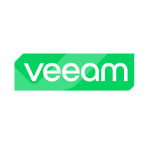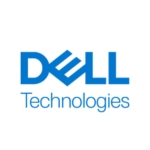What is our primary use case?
Prism is the management dashboard for Nutanix. I'm in there quite frequently; not necessarily every day, but certainly, multiple times a week, whenever I'm checking on the health of the Nutanix environment.
There are a number of other applications that are tied in, Nutanix products, that use Prism for management, like Nutanix Files, which we use. I'm using it to check on that frequently.
I also check alerts and logs with it, and any kind of maintenance or upgrades that we do are all done through Prism. Anytime we do an AOS or foundation upgrade, or upgrades of whatever products are attached to it, they are done through Prism.
It's pretty much a one-stop shop for most day-to-day management of Nutanix. The only time you would ever really go outside of it is if you're having some infrastructure problem that would require you to touch the hardware physically.
We're all on-prem. We're not using any Nutanix cloud. We have multiple locations with Nutanix. It's our production environment, which includes web servers, database servers, email, and storage. Our entire environment runs on it.
How has it helped my organization?
The biggest benefit is the fact that we can ignore it. Seriously. So much of my day is putting out fires or trying to track down problems, performance issues, or errors. The Nutanix platform has been pretty rock-solid in that respect, so I don't have to troubleshoot it as much. But when I do, I don't have to go digging in a bunch of really deep, esoteric log files and look up commands to enter into a CLI to dig out information from the system.
It has a little "heartbeat" icon. If there is something wrong, it's yellow. If there's something really wrong, it's red. It's really simple to see. I check every morning to look at the health of the system. If I ever see a yellow or a red I just click on it to see what the message is. Sometimes it's more involved and I have to reach out to Nutanix support to resolve things. It's hardware, after all, it has failures. That has happened to us. But as far as the Prism aspect goes, being able to track things down and quickly get a resolution, or at least get a support case open for it, is so much easier than most other platforms I've used in the past.
In addition, the network visibility and the microsegmentation of Prism, with Nutanix Flow, is very simple to set up. Once you've done the bulk of the configurations during the initial setup, the day-to-day modifications that you may need to make in your environment to set up new clients are very simple. You click into the Prism menu that brings you to the network area, plug in whatever IP ranges or VLAN segments you need to set up or move clients into, and it's pretty much done. Compared to doing something on a Cisco switch or even in VMware, it's a breeze.
We also use Nutanix's Data-at-Rest encryption. That's very simple to set up. Encryption is typically very onerous and complex to set up in most environments, but the Nutanix implementation of it ties into the single-pane-of-glass approach. You configure a couple of settings in the beginning, and then you go into your storage and decide what you want encrypted. It's pretty much set-it-and-forget-it.
It has made a big improvement to our overall security posture, thanks in large part to the microsegmentation. The Data-at-Rest encryption for storage is also something that we did not have prior to Nutanix.
It has also definitely helped us to reduce management overhead costs. I spend many fewer man-hours working on the hardware environment, compared to what I spent on the equivalent hardware environment that it replaced. And it has definitely helped improve the lives of our support staff in general, the systems administrators and network administrators.
What is most valuable?
The most valuable feature is the solution's single-pane-of-glass approach to consolidating all of the various metrics and interfaces that I would typically have to access via multiple screens in other products. The ease of use would probably be the single biggest selling point. I just have to go to Prism and, from the main dashboard, I get most of the statistics that I need at a glance. And I can drill down further in the environment through the Prism interface if I need to.
Nutanix's single pane of glass is very good. It's quite convenient. I'm seeing the concept more in other products nowadays, but when we first started using Nutanix, it was more unique. Nutanix was one of the first vendors I saw that was able to really unify so much of their product into that single management pane.
And the Prism user interface for compute, storage, and networking is extremely easy to use. In terms of the network, once it is set up, other than watching traffic, we don't really change things very often. But when it comes to storage, I can create and extend storage pools, and make modifications to storage. Obviously, I can also see how much storage we're using. I can also make changes to our replication factor, the tiering. All those things are very simple to do. Most of them are mouse-click interfaces. I may have to enter a couple of values, but there's no code or command lines. It's all extremely simple, GUI-based management. The compute is the same thing. We can see what we're using, resource-wise, very easily at a glance from the dashboard. We're able to see if there's any unusual activity such as high CPU or memory usage. We can drill down and find out what's going on with that, with relative ease.
What needs improvement?
The simplicity that Prism provides is something of a dual-edged sword. It can be almost too simple at times. When there is an issue and something is really wrong, it can make it a little more difficult to track it down because the Prism interface is very limited for drilling down into those highly technical or highly complicated errors. That's usually when you have to break out the admin guide, look up the commands, and log in to the backend hardware. You don't get good, in-depth troubleshooting through the Prism interface.
For how long have I used the solution?
We have been using Prism for about five years.
What do I think about the stability of the solution?
I don't think I've ever encountered an issue with Prism that was more than cosmetic. It's an extremely stable management interface.
What do I think about the scalability of the solution?
Prism Element, which is the standalone solution, obviously doesn't scale very well. That's tied to the various clusters that you deploy. But Prism Central, which is their paid product, which makes a single pane of glass out of all of the single panes of glass, is pretty good. If you are a large enough organization and you have a number of Prism Element installations spread out, then Prism Central would definitely meet your needs as far as growth and management go.
In our organization, there are nine departments using it with a total of about 200 users.
How are customer service and support?
Their support is pretty good. I've had a few issues related to support, mostly for after-hours stuff, where I believe they changed some call centers that they used. But most of that has been hammered out by now.
They're good. They've always given quick responses, even if they don't necessarily have the answer I want to hear. I can't fault the speed of the support reaching out and continuing the lines of communication. They keep you up to date on the issues pretty well.
How would you rate customer service and support?
Which solution did I use previously and why did I switch?
Before we had the Nutanix platform, we used VMware on bare metal hardware.
How was the initial setup?
The initial deployment was a little rocky. The vendor had a solution team come out and do the build of the product and the configuration. That was done incorrectly the first time, so they had to come back out and redo it from scratch. I'm not sure what the problem was; maybe it was a miscommunication at the time of purchase. But once that was straightened out, it was fine.
In terms of learning Prism, within the first week it was easy enough to have a very basic overview of it. Almost anyone, even non-technical people, could read the dashboard pretty easily. Overall, it took two or three more weeks to get a good, comfortable knowledge of the deeper parts of it. In total, it took about a month.
The maintenance required for Prism is the upgrading that we have to perform on it.
What about the implementation team?
The team that came out was a third-party, authorized VAR. They were not Nutanix employees who did it.
What was our ROI?
I know that what we paid for Nutanix is comparable to, or a little bit less than, what we paid for a similar VMware environment. In that respect, it's worth the money because the simplicity of the management and the setup make it so much easier from an administrative point of view. It has saved us a lot of man-hours and, therefore, money, by not having to manage the product so much.
What's my experience with pricing, setup cost, and licensing?
Pricing is not something I'm involved with, but it is easy to apply the licenses that we acquire.
I've used Prism Central, which is their paid, upgraded version of Prism, and I found it quite helpful. But, ultimately, the price they wanted for the features that we got wasn't worth it for us. But I can see where it would be helpful for some organizations.
Which other solutions did I evaluate?
We were looking at other hardware platforms besides Nutanix. Prism wasn't something that we were necessarily looking for by itself, but it was a selling point of the Nutanix platform for us.
What other advice do I have?
Prism is tied into the Nutanix environment. If you're looking at Nutanix as a solution, make sure that you look at the hardware that it's running on and that it meets your needs. That is the one place where we ran into issues. We started out on hardware that ended up being too low-spec for us and we ended up having to get more hardware than we had initially envisioned. It wasn't spec'd out properly in the beginning. But that's not related to Prism itself.
To this day, I don't think I've encountered a product that's as easy to use as Prism is, for everything that it does.
Which deployment model are you using for this solution?
On-premises
Disclosure: PeerSpot contacted the reviewer to collect the review and to validate authenticity. The reviewer was referred by the vendor, but the review is not subject to editing or approval by the vendor.










